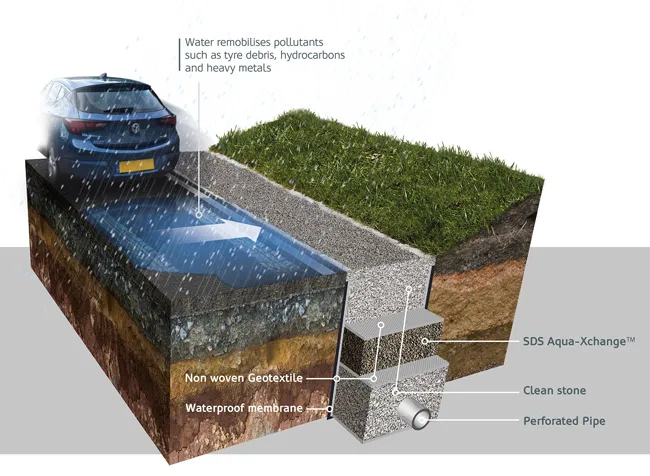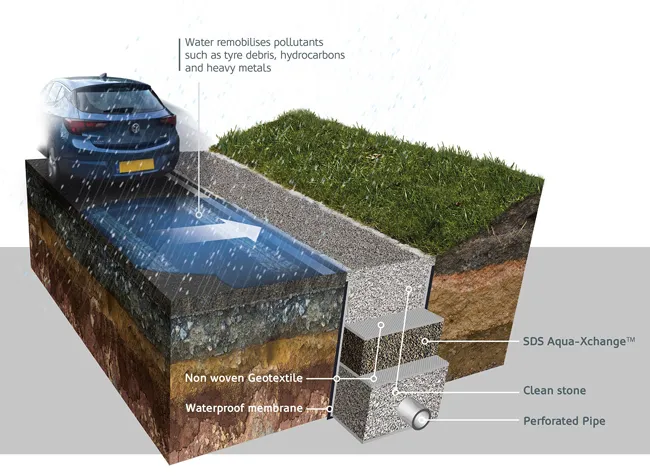An innovative tool aims to help users explore the options for designing and building a surface-water ‘Treatment Train’ as part of Sustainable Drainage Systems (SuDS). The new, free-to-use Treatment Selection Tool, available at www.hydro-int.com/stormtrain/tool, has been developed by Hydro International in response to tougher environmental and planning requirements for SuDS that remove silts, sediments, oils and pollutants from surface water runoff.
November 11, 2013
Read time: 2 mins
An innovative tool aims to help users explore the options for designing and building a surface-water ‘Treatment Train’ as part of Sustainable Drainage Systems (SuDS).
The new, free-to-use Treatment Selection Tool, available at %$Linker:2 External <?xml version="1.0" encoding="utf-16"?><dictionary /> 0 0 0 oLinkExternal www.hydro-int.com/stormtrain/tool Hydro stormtrain tool false http://www.hydro-int.com/stormtrain/tool false false %>, has been developed by 1402 HYDRO International in response to tougher environmental and planning requirements for SuDS that remove silts, sediments, oils and pollutants from surface water runoff.
To achieve required water quality on a new development, car park or highway, multiple stages of SuDS features may need to be used in sequence to achieve a so-called Treatment Train. This approach is already established as the preferred method in Scotland, and proposed new National SuDS Standards for England and Wales are expected to follow a similar pattern when they become law in April 2014.
Alex Stephenson, director of Hydro’s UK Stormwater division, said, “Many people who have a responsibility for designing, building or approving Sustainable Drainage Systems are currently developing their knowledge and understanding of surface water treatment best practice.
“We decided to develop a simple tool that can be used by anyone to investigate the full SuDS toolbox, selecting from both manufactured devices and natural features to build a treatment train. The tool then helps users to understand how well each combination would perform and the likely costs involved.”
With the Treatment Selection Tool, users can specify the catchment type and receiving water body and then investigate ‘what if’ scenarios to build example treatment trains. The tool helps users understand the pros and cons of choosing different SuDS features. The tool calculates the consequent pollutant removal achieved, as well as working out capital and whole-life cost implications.
HYDRO International has developed the tool to support the launch of ITS Hydro StormTrain Series of surface water treatment devices. However, the tool provides objective choices encompassing the full range of SuDS techniques and is based on established standard independent industry guidance.
The new, free-to-use Treatment Selection Tool, available at %$Linker:
To achieve required water quality on a new development, car park or highway, multiple stages of SuDS features may need to be used in sequence to achieve a so-called Treatment Train. This approach is already established as the preferred method in Scotland, and proposed new National SuDS Standards for England and Wales are expected to follow a similar pattern when they become law in April 2014.
Alex Stephenson, director of Hydro’s UK Stormwater division, said, “Many people who have a responsibility for designing, building or approving Sustainable Drainage Systems are currently developing their knowledge and understanding of surface water treatment best practice.
“We decided to develop a simple tool that can be used by anyone to investigate the full SuDS toolbox, selecting from both manufactured devices and natural features to build a treatment train. The tool then helps users to understand how well each combination would perform and the likely costs involved.”
With the Treatment Selection Tool, users can specify the catchment type and receiving water body and then investigate ‘what if’ scenarios to build example treatment trains. The tool helps users understand the pros and cons of choosing different SuDS features. The tool calculates the consequent pollutant removal achieved, as well as working out capital and whole-life cost implications.
HYDRO International has developed the tool to support the launch of ITS Hydro StormTrain Series of surface water treatment devices. However, the tool provides objective choices encompassing the full range of SuDS techniques and is based on established standard independent industry guidance.








